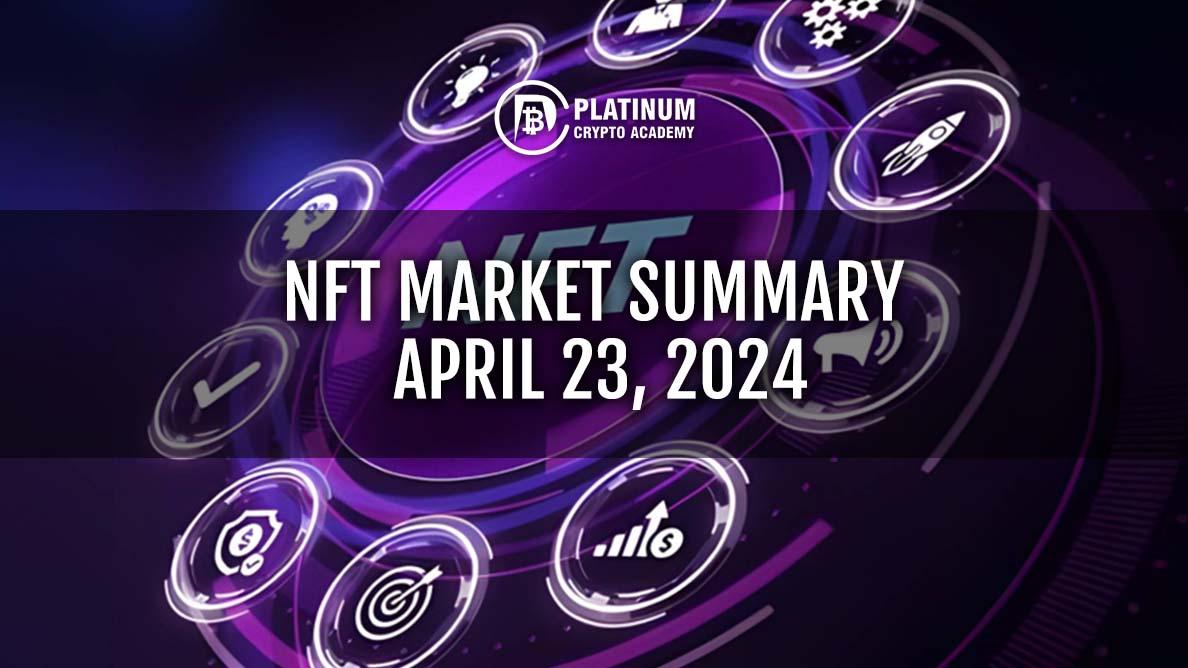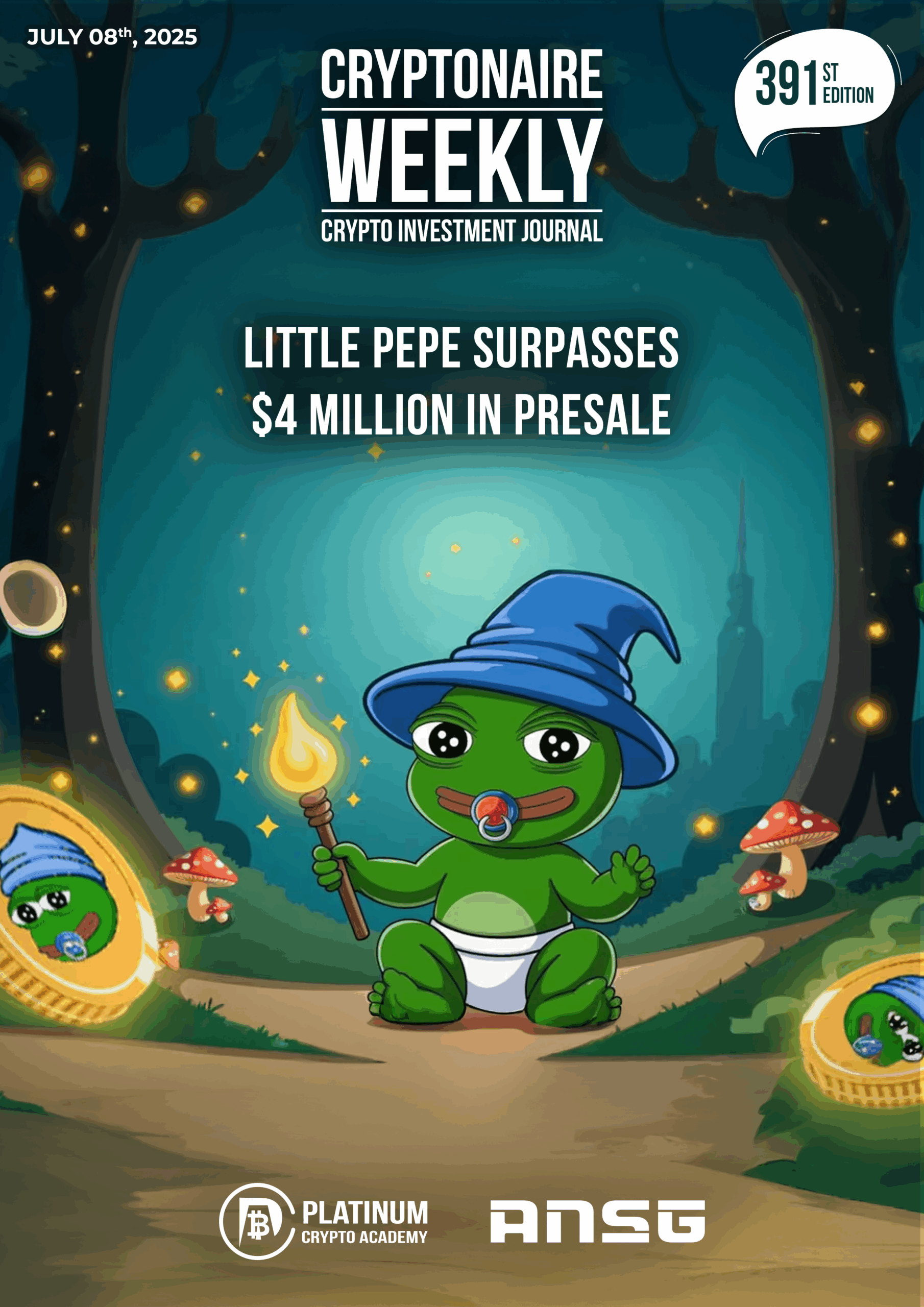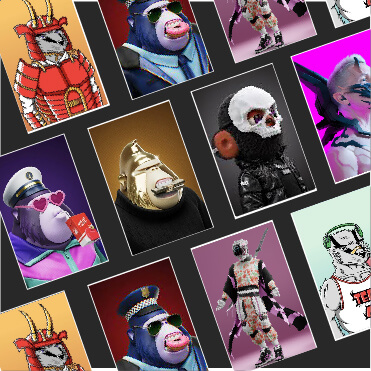The NFT market, once celebrated for its rapid growth and staggering sales figures, has recently faced a significant downturn, raising concerns about its future direction. Since reaching its peak in the spring of 2022, the market has experienced a sharp decline, with prices dropping below 30 ether, marking an alarming 83% decrease from its previous all-time high.
The introduction of the Ethereum ERC-721 token sparked a surge in the NFT market, characterized by soaring prices and record-breaking sales. Notable transactions, such as Beeple’s US$61 million NFT sale and Damien Hirst’s ‘The Currency’ collection selling for US$89 million, contributed to the perception of an unstoppable NFT boom.
Between August 2021 and April 2022, weekly trading volumes reached unprecedented levels, often exceeding the range of US$750 million to US$1.5 billion. However, the excitement surrounding NFTs has waned, with the average price of token sales experiencing a staggering 92% decline from 2022 to 2023, dropping from US$3,894 to just US$293, according to data from Chainalysis.
The sudden downturn in the NFT market has led to questions about its root causes and future implications. Interestingly, amidst the decline in the NFT market, Bitcoin’s price has surged, leading to speculation about a potential correlation between the performance of the cryptocurrency and NFT markets.
However, what factors have contributed to the sharp decline in the NFT market, and what does this mean for its future direction? As market participants grapple with these questions, the fate of NFTs remains uncertain, awaiting clarity amidst the ambiguity surrounding their future.
Debating the Correlation between Blockchain Assets
The correlation between blockchain-based assets has sparked significant debate within the financial community, with differing opinions on the relationship between the strength of the crypto market and traditional financial markets.
Alun Evans’ Perspective: Cryptocurrencies as Commodities
According to Alun Evans, CEO of Freeverse, the recent surge in the crypto market can’t be solely attributed to perceived weaknesses in traditional financial markets. Evans highlights the evolving perception of cryptocurrencies as commodities, distinct from traditional currencies. He emphasizes that Bitcoin, in particular, is increasingly regulated as a commodity in most jurisdictions, challenging the notion of cryptocurrencies as mere alternatives to fiat currencies.
Toby Rush’s Contrasting View: A Symbiotic Relationship
In contrast, Toby Rush, CEO and Co-founder of Redeem, argues for a symbiotic relationship between Bitcoin and NFTs. Rush suggests that the rise of Bitcoin and the resilience of NFTs are interconnected, reflecting broader trends of consumer interest and engagement with blockchain innovations. He points to ongoing developments and innovations within the NFT space as evidence of sustained consumer appetite for emerging NFT technologies.
The Importance of NFT Innovation
Rush’s viewpoint highlights the significance of continuous initiatives and advancements within the NFT market. Despite fluctuations in overall market performance, Rush suggests that consumer demand for NFT innovations remains robust. This resilience underscores the enduring appeal of NFTs as a means of digital asset ownership and engagement, challenging narratives of decline and indicating potential opportunities for continued growth and innovation within the blockchain ecosystem.
Despite the Present Downturn, the NFT Market is Poised for Future Growth
Despite the ongoing downturn in the NFT market, there is optimism regarding its future trajectory. By redefining NFTs as more than just speculative investments or tradable assets, the outlook for the NFT market appears promising despite its current challenges.
Data sourced from Statista indicates a positive growth trajectory for the NFT market, with projections suggesting a substantial increase in market size. The market is expected to expand to US$3.2 billion by 2027, representing a compound annual growth rate (CAGR) of 18.55% from its 2023 valuation of US$1.6 billion.
Furthermore, the number of NFT users is forecasted to experience significant growth, reaching an estimated 19.31 million by 2027. This surge in user adoption is expected to result in a user penetration rate of 0.2% by the same year.
These projections portray a promising outlook for the future of NFTs, indicating a growing recognition of their value beyond mere speculative assets. As the market evolves and stakeholders begin to perceive NFTs differently, the current downturn is anticipated to be temporary, with brighter prospects on the horizon.
Exploring the Versatility of NFTs: Moving Beyond Investment Speculation
Alun Evans, CEO of Freeverse, presents an insightful take on the recent downturn in the NFT market. In contrast to prevailing concerns, Evans advocates against viewing investments as the primary or optimal use case for NFTs. He stresses that the genuine value of blockchain and Web3 technology resides in the ownership of digital assets and their capacity to evolve through user interactions.
“Investments aren’t the ultimate purpose for NFT technology in the long run,” asserts Evans. “The true essence of blockchain and Web3 lies not in artificial scarcity, but in empowering digital asset ownership and facilitating their evolution based on user engagement.”
Evans underscores blockchain technology’s potential to introduce liquidity into previously untapped domains, such as assets within video games or loyalty programs for major brands. Through the utilization of NFTs, digital assets gain versatility and dynamism, adapting alongside user interactions and preferences.
Given this perspective, the recent decline in NFT market prices could be interpreted as a recalibration in understanding their optimal use. Evans suggests that as stakeholders acknowledge the broader utility of NFTs beyond mere investment speculation, the market undergoes a process of maturation.
“In essence,” concludes Evans, “the ERC-721 token made its debut only in 2017.” This observation highlights the relatively early stage of NFT technology and its potential for further advancement and innovation in the years ahead.
Examining the Future Potential of NFTs: Moving Beyond Investment Speculation
Alun Evans, a proponent of the future possibilities of NFTs, argues that their role as investments is just the tip of the iceberg in terms of their broader utility. He proposes that while NFTs can serve as tradable assets, similar to gold or art, their real value lies in their capacity to unlock liquidity in previously inaccessible domains.
“While NFTs can temporarily function as investments or stores of value, this should not be their primary role going forward,” emphasizes Evans. “The true power of tokenizing assets lies in unlocking liquidity where it was previously lacking. The worth of NFTs should be assessed by their utility — how and where they can be utilized — rather than solely by their scarcity.”
Evans contends that NFT technology offers more practical and valuable applications beyond the initial hype and speculation. He suggests that the next iteration of NFTs, known as “dynamic” NFTs, holds a more promising future for the technology.
“Diving into Dynamic NFTs: Expanding Beyond Traditional Value Metrics”
Evans highlights the departure that Dynamic NFTs make from traditional ones, which typically derive value solely from scarcity or speculation. He explains, “Dynamic NFTs encourage active engagement with the underlying brand or offering, allowing owners to interact, share, or trade them. This fosters increased long-term user retention and opens significant opportunities for industries like gaming and brands.”
Toby Rush, CEO of Redeem, shares a similar perspective, underlining the expansive scope of NFTs beyond investments and trading. He emphasizes that NFTs can transcend their initial use cases, akin to how static websites evolved to offer dynamic and interactive experiences on the internet.
“For example,” Rush explains, “NFT-powered tickets can serve as cryptographic proof of ownership and authenticity, granting holders access to live events without the risk of counterfeit tickets. They can also provide users with exclusive benefits based on their interaction history, purchases, or other unique aspects of their experience. Ultimately, prioritizing utility unlocks new revenue streams for businesses and offers a seamless entry point for users into the Web3 space.”
Exploring Role of NFT in the Metaverse: Shaping Digital Ownership
The integration of NFTs into the metaverse world raises intriguing questions about their potential impact on shaping digital experiences. If utility is indeed paramount for the future application of NFTs, how do they fit into the fabric of the metaverse? Given the anticipated influence of crypto and blockchain-based assets in this virtual frontier, the significance of NFTs becomes a compelling topic of discussion.
Alun Evans sheds light on this issue, emphasizing the significant role that NFTs play in the metaverse. He views the metaverse as an extension of our digital existence, where individuals have the freedom to craft their virtual identities. In this context, the value of digital possessions becomes apparent. Evans stresses that beyond their predominant use as investment assets, NFTs excel in demonstrating ownership of digital items, both within and beyond the metaverse.
Toby Rush shares this perspective, labeling NFTs as essential pillars enabled by blockchain technology. He foresees NFTs retaining their significance in the emerging Web3 ecosystem, emphasizing their potential for growth and adaptation. Rush highlights the rising trend of token-gated events, where specific NFT holders gain exclusive access to real-world or metaversal experiences, as proof of the expanding utility of NFTs.
Furthermore, Rush brings attention to the “phygital” movement, which connects physical luxury goods with their digital equivalents. While these initiatives may encounter slower adoption in the West, Rush observes a more receptive audience in Asia. He mentions a metaverse event hosted by the K-Pop group BlackPink, which attracted a massive 46 million users. This enthusiastic response underscores Asia’s openness to Web3 technologies and suggests a promising future for NFT adoption.
Rush emphasizes that Asia often leads in adopting digital trends, indicating that we are still in the early stages of unlocking the full potential of NFTs. This enthusiastic embrace of NFTs in Asia provides a positive outlook for their future development and underscores the transformative role they can play in shaping the metaverse landscape.
Wrap Up
In summary, the discussion about the role of NFTs in the digital landscape and the emerging metaverse highlights their transformative potential. Alun Evans and Toby Rush offer insightful perspectives on the various aspects of NFTs, stressing their ability to redefine concepts like ownership, utility, and engagement.
As Evans rightly points out, the real value of NFTs goes beyond their current status as speculative assets. Instead, they represent tangible forms of digital ownership, enabling unprecedented levels of interaction and customization in virtual realms. This redefinition of ownership extends to the metaverse, where individuals can shape their digital identities and proudly display their digital possessions.
Rush further emphasizes the dynamic aspect of NFTs, pointing out their ability to adapt and thrive amidst changing consumer preferences and market trends. Whether it’s through token-gated events or the merging of physical and digital realms via the “phygital” movement, NFTs continue to lead the charge in innovative applications that blur the boundaries between the virtual and the real.
As we venture into the expanding realm of Web3 technologies, the potential of NFTs knows no bounds. Their capacity to connect physical and digital spheres, empower creators and consumers, and cultivate lively communities heralds a digital renaissance in progress.
In this era of digital renaissance, NFTs are emerging as catalysts for creativity, collaboration, and empowerment, marking the beginning of a new era characterized by decentralized ownership and expression. As we embark on this transformative journey, it becomes evident that the future of NFTs is bright, promising, and brimming with possibilities. As the digital landscape evolves, NFTs will continue to play a pivotal role in reshaping how we perceive and interact with digital assets. Their potential to revolutionize various industries, from art and gaming to real estate and beyond, is vast and exciting. With each innovation and advancement, NFTs are solidifying their position as a fundamental pillar of the digital economy, offering new avenues for creators, collectors, and investors alike.



